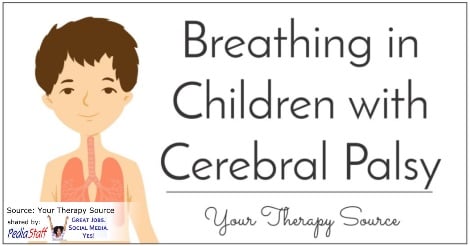Breathing in Children with Cerebral Palsy
[Source: Your Therapy Source]

Developmental Neurorehabilitation published research comparing breathing in children with cerebral palsy to neurotypical peers. The participants in the study included 20 children with cerebral palsy (GMFCS levels I-III) and 20 neurotypical children ages 7-11 years old. To determine the immediate effect of breathing rate on heart rate (HR) and heart rate variability (HRV), HR was monitored at rest and during paced breathing with biofeedback. Spirometry was used to evaluate respiration.
The results indicated the following regarding breathing in children with cerebral palsy:
- lower spirometry and HRV values at rest compared to neurotypical children.
- during paced breathing the mean reduction of breathing rate among children with CP was significantly smaller.
- while practicing paced breathing, both groups reduced their breathing rate and increased their HRV.
PediaStaff is Hiring!
All JobsPediaStaff hires pediatric and school-based professionals nationwide for contract assignments of 2 to 12 months. We also help clinics, hospitals, schools, and home health agencies to find and hire these professionals directly. We work with Speech-Language Pathologists, Occupational and Physical Therapists, School Psychologists, and others in pediatric therapy and education.
